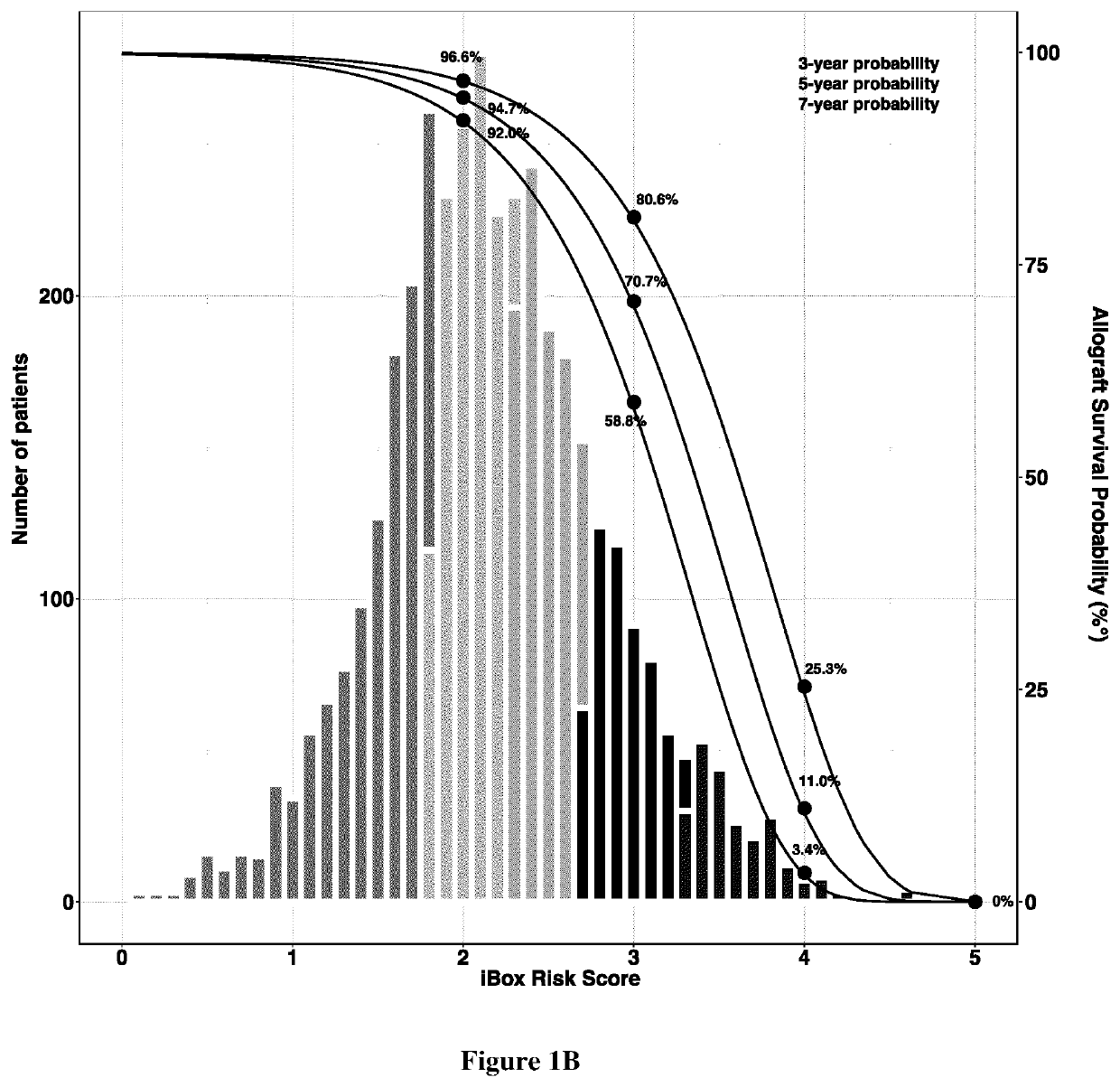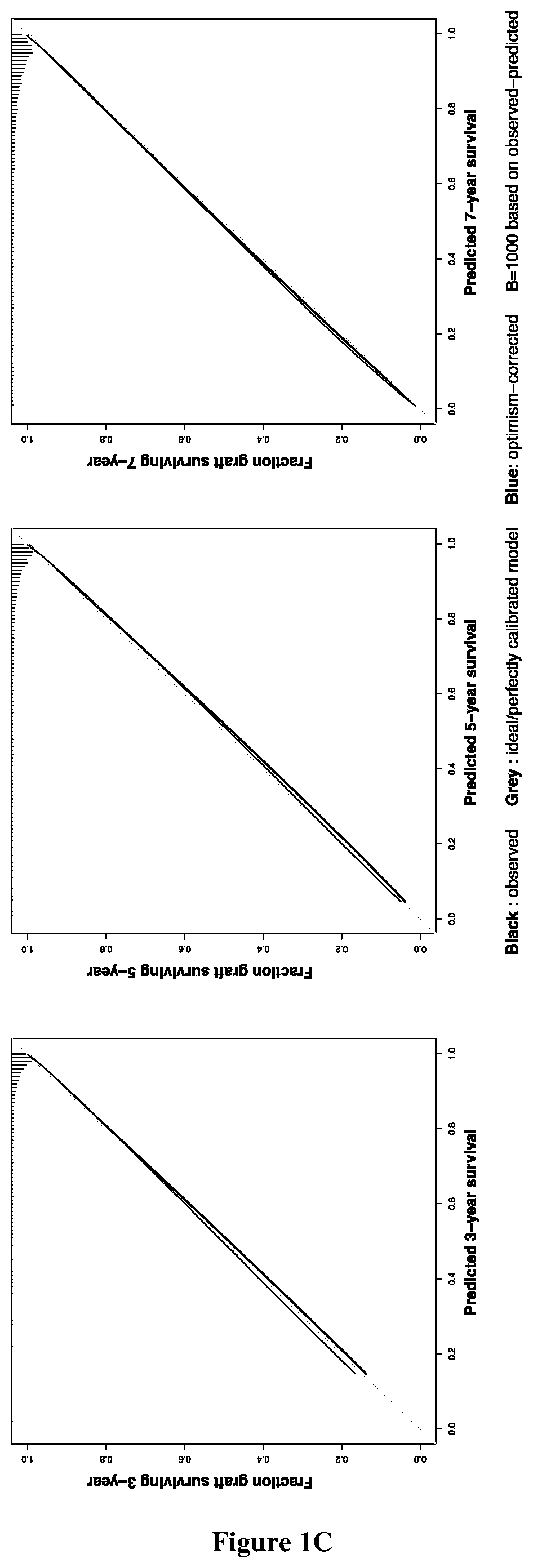Method of predicting whether a kidney transplant recipient is at risk of having allograft loss
- Summary
- Abstract
- Description
- Claims
- Application Information
AI Technical Summary
Benefits of technology
Problems solved by technology
Method used
Image
Examples
example 1
LOSS RISK PREDICTION SCORE IN KIDNEY TRANSPLANT RECIPIENTS: AN INTERNATIONAL DERIVATION AND VALIDATION STUDY
Methods
[0181]Study Design and Participants
[0182]Derivation cohort. The derivation cohort consisted of 4,000 consecutive patients over 18 years of age who were prospectively enrolled at the time of kidney transplantation from a living or deceased donor at Necker Hospital (n=1,473), Saint-Louis Hospital (n=928), Foch Hospital (n=714), and Toulouse Hospital (n=885) between Jan. 1, 2005, and Jan. 1, 2014, in France. The clinical data were collected from each centre and entered into the Paris Transplant Group database (French data protection authority (CNIL) registration number: 363505). All data were anonymised and prospectively entered at the time of transplantation, at the time of posttransplant allograft biopsies and at each transplant anniversary using a standardised protocol to ensure harmonisation across study centres. Data from the derivation cohort were submitted for an an...
example 2
tary Methods
[0235]Data Collection Procedures
[0236]All data from Paris-Necker, Paris-Saint Louis, Foch and Toulouse hospitals were extracted from the prospective Paris Transplant Group Cohort data cohort (CNIL, Registration number: 363505, validated on the 8 of Jun. 2004). The database networks have been approved by the National French Commission for bioinformatics data and patient liberty and codes were used to ensure strict donor and recipient anonymity and blind access. Informed consent was obtained from the participants at the time of transplantation. The data are computerised in real time and at the time of transplantation, at the time of post-transplant allograft biopsies and at each transplant anniversary and are submitted for an annual audit.
[0237]Independent Validation Cohorts
[0238]In the European validation cohort, the French data from the Lyon, and Nantes Hospitals for donors and recipients were extracted from the DIVAT clinical prospective cohort (official website: www.di...
example 3
ue of the ibox Risk Prediction Score Compared to Risk Scores Previously Reported in the Literature
[0274]A comprehensive search strategy was conducted through several databases (PubMed, Medline, Embase, Cochrane, and Scopus) without date restrictions for publications up to Jul. 25, 2018 for allograft survival scoring systems among kidney transplant recipients. We used the search terms “kidney transplantation”, “allograft survival” and “prognostic score”. Out of 460 articles identified, 11 were related to long-term allograft survival, 5 were externally validated and only 2 comprised immunological parameters. They are presented in Table 9 and compared with the iBox risk prediction score. The two studies identified: i) were not derived from patient cohorts with systematic monitoring and specific design towards risk stratification; ii) did not integrate a large spectrum of potential prognostic factors, iii) were not validated in multiple large cohorts worldwide with different transplant ...
PUM
 Login to View More
Login to View More Abstract
Description
Claims
Application Information
 Login to View More
Login to View More - R&D Engineer
- R&D Manager
- IP Professional
- Industry Leading Data Capabilities
- Powerful AI technology
- Patent DNA Extraction
Browse by: Latest US Patents, China's latest patents, Technical Efficacy Thesaurus, Application Domain, Technology Topic, Popular Technical Reports.
© 2024 PatSnap. All rights reserved.Legal|Privacy policy|Modern Slavery Act Transparency Statement|Sitemap|About US| Contact US: help@patsnap.com










